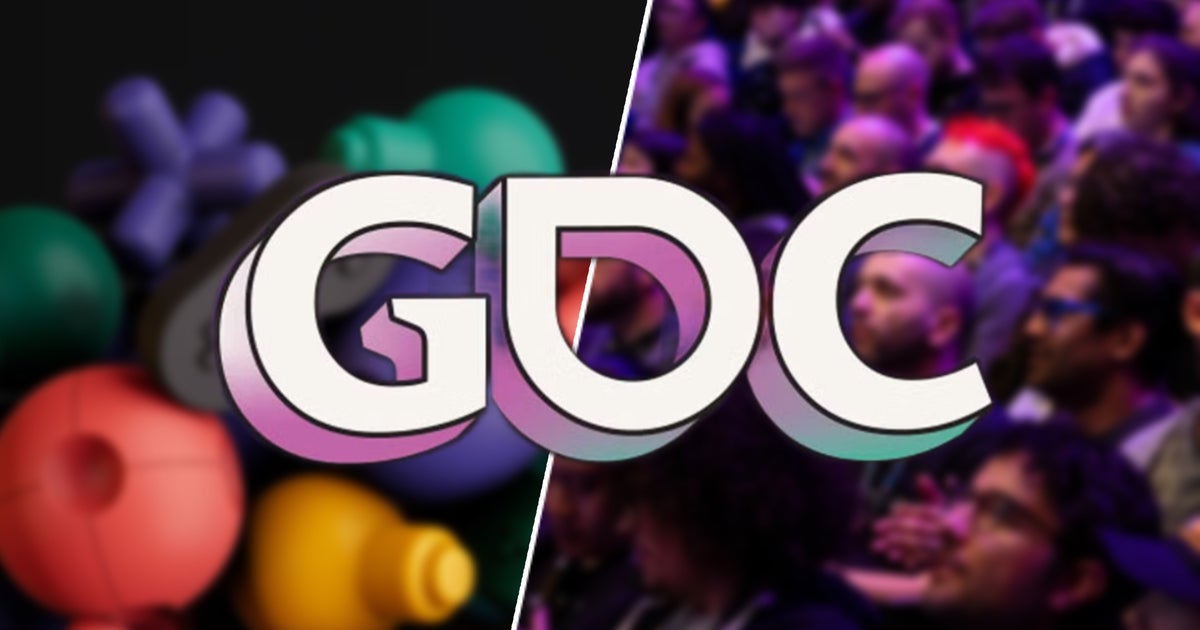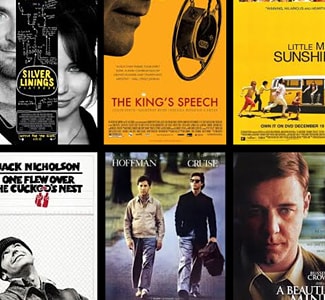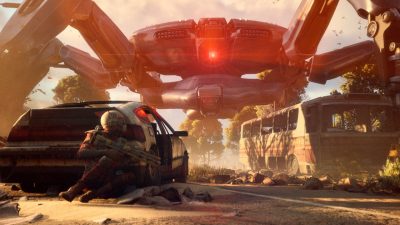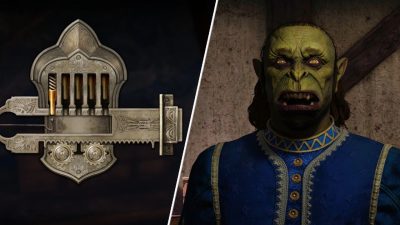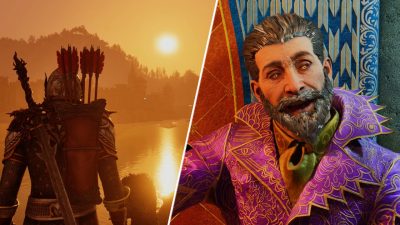A common phrase around the video game industry last year was the mantra of “Suvive ‘til 25”. Times were hard, layoffs were rife – and people felt bad. But a new year could only bring better, right? Well, 2025 has so far proved that 2024’s motto was a little over-optimistic to say the least – but hanging out at 2025’s Game Developers Conference, it does feel as though brighter times could at last be on the horizon.
That’s probably the grand theme of GDC, a conference where I spent more time catching up with people and hanging out than I did seeing new video games or chasing down stories. One specific analysis seems to have taken hold, in that few seem disposed to deny that things are pretty fucked up right now – but many are finally feeling properly optimistic for the future, which wasn’t true for the jittery, nervous mood of 2024.
On the ground in the Moscone Convention Center’s expo halls, GDC felt a little smaller. For starters, key partners and mainstays like Unity and Epic had eschewed booth, which always has the effect of making the entire show shrink in scope. In a sense, it reminded me of those later E3s when companies like Sony and EA took their business off-site, leaving everything in the normal show feeling like something was missing. So, yes, GDC’s show floor looked more meagre – but more notable, undoubtedly, was the reduction in foot traffic.
Let’s not mince words: in headcount terms, the industry has certainly shrunk. Forcibly, at the hands of layoffs caused by money-grubbing executives, company mismanagement, and pandemic boom over-reach. A wander around GDC and the surrounding complex of hotel lobbies and restaurants on any given day of the show appears to reflect that.
There’s more factors besides, though. GDC passes are notoriously expensive, and as people tighten their belts perhaps they’re too frivolous an expense. Official GDC attendance numbers pin the number of badges issued as roughly the same as last year, so more flat than a decline. But a time-honored tradition of GDC has always been folk attending without a pass, taking up meetings around the convention center while others are in town. Several of the best meetings I take to see games are tucked away in coffee shops or hotel rooms, games most often quietly booted up on a Steam Deck which is then surreptitiously handed to you.
These badgeless people – arguably the industry’s most in need of GDC’s networking, appeared to be fewer this year. In this, we have to look at the geopolitical situation, as those from many countries and backgrounds reconsider their willingness to travel in the face of… well, you know, everything.
But at the same time, at the fringes of the convention, it feels as though a wind of change is gradually beginning to quietly howl. At events like E3, notable absences from the show floor felt like and ultimately were signs of an existential shift – but at GDC it all feels rather like the natural generational ebb and flow instead. After all, much of the wheeler-dealing done at GDC takes place in private suites, over dinners, or in eager hobnobbing in crowded hotel lobby bars. That hasn’t changed, which makes the scale of the show floor much less relevant.
Speaking to people taking more substantive meetings at the event, it’s clear that the reduced size isn’t necessarily a negative thing. A couple of high-flying executive types, speaking casually and off-the-record, seemed pleased with their progress at the event – perhaps showing that a reduction in size and attendance can also serve as a reduction in noise, allowing space for the meetings that remain to thrive. And individual developers seemed enthused, too – even those working for publishers that have recently laid people off appeared to have a tad more optimism now.
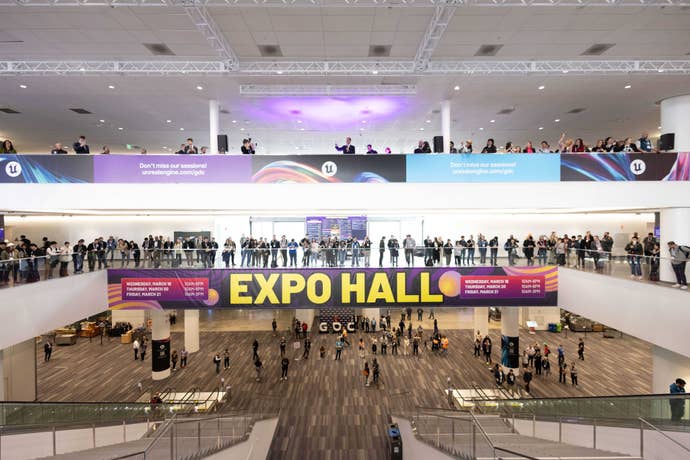
“I’m feeling more hopeful, yeah,” one developer mused to me in an after-hours catch-up. “Honestly, last game, it feels like it was just a total miracle we shipped. But right now, at least, it feels like I’m moving in the right direction. My new project is starting out in totally the right way. It’s a world of difference.”
While Westerners are wary of recent pains, one other thing has to be said: developers from the East have a more positive outlook in general. One Japanese developer reveals that they find it a little hard to identify with some of the fearful undertones in talks and casual chatter from their Western colleagues because “things are currently pretty great in Japan”. This perhaps offers a glimpse of one curious truth: Japan is back, and China is rising – which means the West is going to have to match that energy. Thankfully, the more positive vibes suggest that could be happening.
What I’m saying, I suppose, is that the joy of video games felt a little more alive at this year’s GDC. The number of times I bumped into an old acquiatance fizzing with excitement over a new idea or project – people that were utterly dejected 18 or 24 months ago – was significant. This is still a hard-nosed business, of course, and so optimism on the ground is cold comfort if you’re at home job hunting after some executive slashed your job in order to make sure they can afford their next yacht. But the art and expression of gaming was more on display in happier faces, in joyous alternate control scheme showcases, and in an awards ceremony that was brilliantly diverse and representative of those who make up the industry. Crucially, those lost and absent were not forgotten – with the awards underlining the dangers of AI, the cruelty of layoffs, and the industry’s dangerous habit of haemorraging experienced talent. Stuff needs calling out – and folk were doing it.
Collaboration proved an interesting theme, too. From Nvidia, AMD, and Intel standing on the same stage together exciting exposing graphical advancements they’re all behind, to most of gaming’s major publishers pulling together under industry body the ESA for a fantastic new accessibility initiative, there’s a greater sense of brands working together for the greater advancement of the form.

Amidst the joy, there’s the serious stuff, obviously. I experience endless discussions abound about tariffs – which companies are most exposed, who is prepared, and who isn’t. I sit through excruciating debates about AI that, with careful application of alcohol, escalate quickly. AI is everywhere, from the curious and interesting implementation (Nvidia’s focus on using AI to enhance performance seems more reasonable, for instance) to nonsense job-stealing guff that creates dubious-quality results. But I was pleased to see that web3 crap appears to have been mostly excised, that particular bubble seemingly on its way to not quite burst, but more fizzle out of existence with a whimper.
And while job security is still an issue, where last year’s GDC was home to a collective pre-arranged primal howl into the void, this year it’s instead home to an organized and loud protest march for unionization, announcing the launch of a potentially powerful new union. That juxtaposition perhaps sums it up best: last year was fit for a scream of rage, while this year that anger is perhaps not replaced, but channelled. Channelled into organization, into demands, into calling out bad behavior, and into developers getting back in the saddle to build exciting new games.
Most I meet are still, it has to be said, more than a little nervous – but there’s a forward-looking vibe that is distinctly less toxic than last year. People are excited about making games again. In 2024, the mantra was just to survive. In 2025, it feels like the intention is to force the powers that be to build something better.




